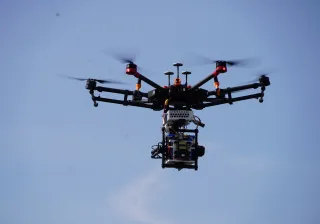How can one communicate fluently with artificial intelligence? Can one cooperate with artificial intelligence?
The existing artificial intelligence (AI) systems based on machine learning are often independent actors that inform people about their conclusions, but otherwise interact with people in a very limited scale. AI is being increasingly introduced not only in services accessible via the internet, but also in mobile machines, such as autonomous cars and robots. We should consider how to ensure that AI will always remain under human control, and how humans can and how they should be able to interact with AI.
Verbal and non-verbal communication
In trend analyses of technology, the interactive properties of AI have been identified as the next major step in their development. Dialogical interaction does not require the user to seek and learn commands, but the correct function is negotiated through free dialogue with the machine. Interaction can be supplemented by non-verbal communication in such a manner that the machine identifies and reacts to the person’s emotional state, such as the person being confused. A machine can learn to identify individuals and adjust its operations according to which matters the person is and is not familiar with, and how he or she prefers to operate. Personal virtual assistants, such as Apple’s Siri, strive to establish a relationship with their owner and learn their preferences in such a manner that, with time, they can predict the person’s needs and offer assistance even before the person takes the initiative to ask for it.
In the internet, nowadays you often encounter chatbots. They are already relatively clever, and, when dealing with them, you may not always notice at first that you are not encountered by a real human being. A chatbot’s ability to discuss is based on the fact that it knows very well the limited service area within which it operates. It has learned to predict what kind of questions people may have. Every now and then, a chatbot may feel a little bit rude. This probably derives from the fact that they are programmed by people who transfer their own manners to the robot.
Interest towards AI solutions where a human and AI operate in collaboration with each other is increasing. Collaborative human power can be used, for example, for collecting data or interpreting images in solutions, where a large group of people and AI form a collectively functioning entity. This kind of collective intelligence has been used for such purposes as digitalisation of old texts. A human eye is incomparable in recognising words, even when written in strange letters. When AI carries out easy text recognition tasks and lets people deal with any unclear cases, the work will advance quickly with such collective power.
Fluent interaction requires learning and participation
Fluent interaction between humans and AI still requires a lot of development in many areas. In the future, we will see increasing amounts of work teams consisting of humans and robots. A robot can assist humans in many kinds of maintenance and service tasks. Fluent interaction is based on AI, with the help of which the robot interprets its environment and humans. Recognising the intentions of one another plays a key role: a human must be able to anticipate the robot’s actions, and, in the same way, the robot must be able to anticipate human actions. Dialogical interaction solutions are needed in this field as well.
Autonomous cars and other vehicles largely function on their own, but when they encounter a problematic situation, they may easily need human assistance. In such a situation, it is good if the machine has kept the human up to date on what is going on, so that he or she may quickly resolve the problematic situation. Indicating and recognising intentions is important also with a view to bystanders: when pedestrians encounter an autonomous car, how can they be sure that the car has seen them and stops at a pedestrian crossing to give way for them? How do you establish an eye contact with an autonomous car?
Different smart services at home and in offices strive to fulfil people’s wishes and predict their desires. Often such services remain unnoticed by people, in which case it may remain unclear why air conditioning is blowing at full blast or why the temperature does not rise. An easy interaction channel is needed, so that people can find out why things are going the way they are going, and that they can influence matters.
AI is not infallible − it can make mistakes and it may have faults. Once humans learn to understand the limitations of AI, and the way AI draws conclusions and functions, the interaction between them will become easier. When people understand the basics of the way AI functions, they can put themselves on a level with it, in the same manner as people naturally tune into the same level with the person they are talking with. It is important to develop AI solutions in such a manner that people who will work with AI are allowed to participate in the design of the solutions.



